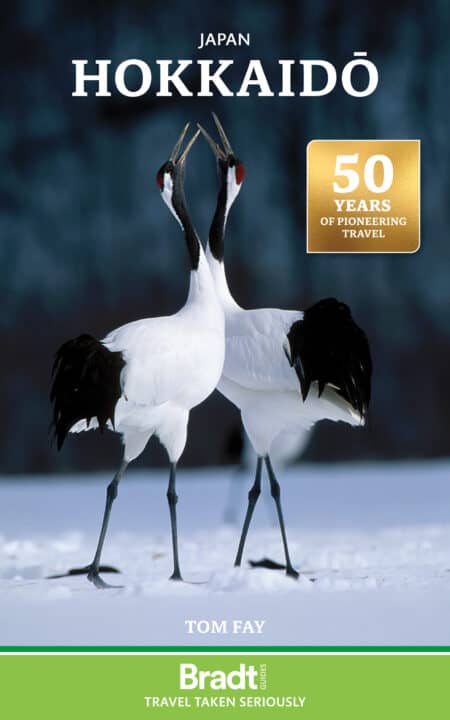Embrace the enchanting winter wonderland of Sapporo, where snow-covered landscapes transform the city into a magical realm of seasonal beauty. Home to the world-famous Sapporo Snow Festival and countless bowls of steaming hot ramen, the city is a must-visit destination for winter enthusiasts.
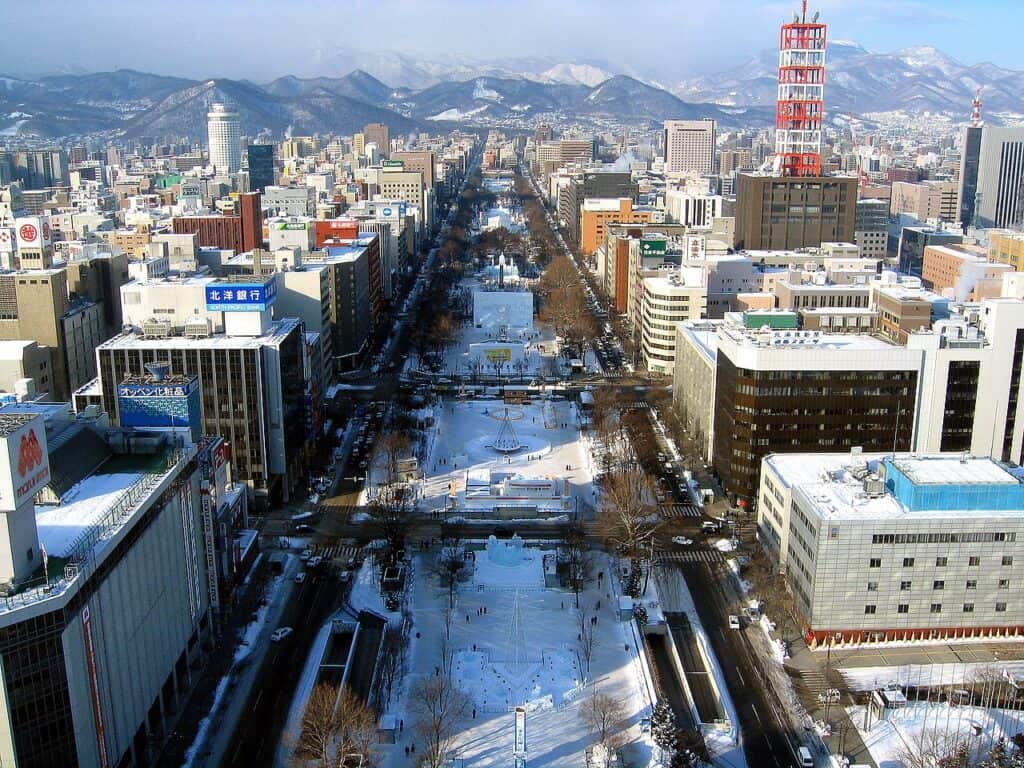
How to experience winter in Sapporo
Hokkaido, Japan’s northernmost main island, is well known for its outstanding natural beauty, incredible cuisine and extremely cold winters – the western and northern parts of the island in particular receive some of the heaviest snowfall in the world, turning the place into a white winter wonderland for a good third of the year.
Sapporo is Hokkaido’s prefectural capital city, and with a population of 1.9 million, it is the fifth largest in the country. In some ways, it appears to be a typical Japanese city – buildings soar skywards, neon lights and indecipherable kanji plaster across signboards vying for attention, the streets bustle with briefcase-wielding business people and the occasional tucked-away shrine or park offer respite from the hum of traffic and commuters.
But come the winter, Sapporo is transformed completely as great snowfalls blanket everything under metres of white powder. Roads and alleyways ice over, piles of snow line the streets, icicles hang from the eaves of every building and people spend mornings digging out their front doors and cars. But rather than grinding everything to a halt, Sapporo seems to revel in its wintery regalia, and the frigid winter months are arguably when the city is at its most magical, making it a wonderful time to visit.
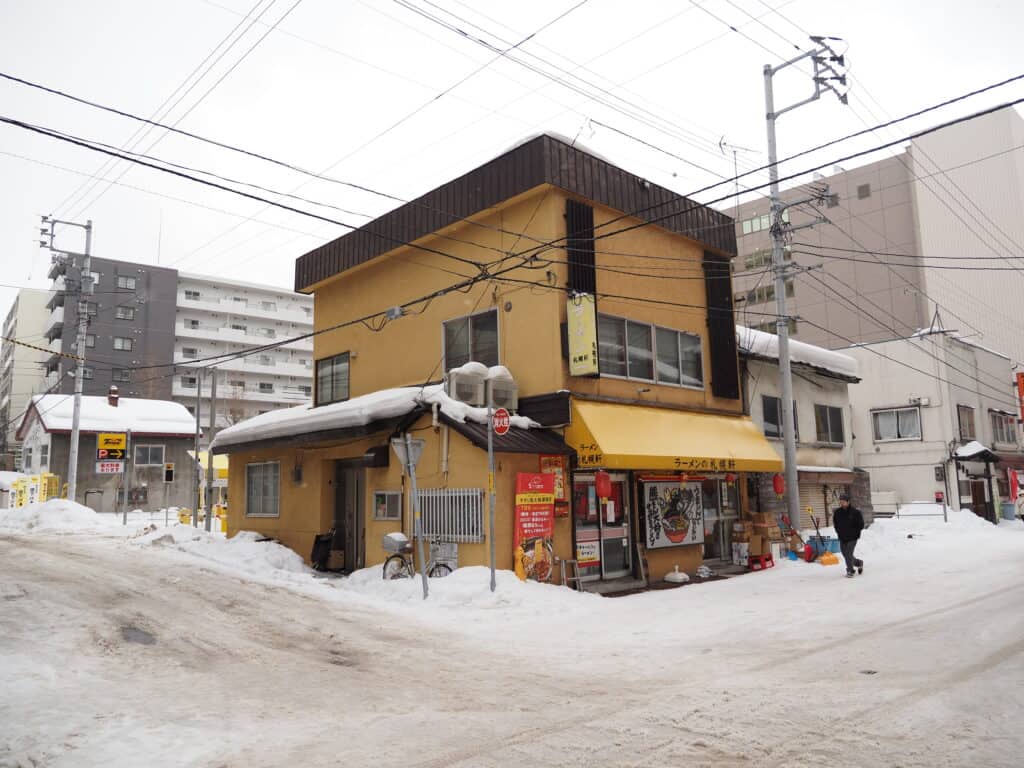
What to see and do in Sapporo in winter
Despite being a relatively new city (officially established in 1871), Sapporo has plenty to keep you occupied for a couple of days, perhaps even more so during the winter than in the summer.
Visit the Sapporo Snow Festival
Held for seven days in early February in Sapporo’s downtown Odori Park and a few other locations around the city, the Sapporo Snow Festival attracts millions of visitors every year. Despite being one of Japan’s largest annual festivals, it is free to enter. The main attractions are the enormous and expertly-crafted snow and ice sculptures, which in the past have included popular anime characters and life-size international landmarks! Some of these sculptures even ‘come to life’ with projection-mapping, and all are lit up for visitors to enjoy at night. There are also stalls selling snacks and beverages, plus you can try your hand at curling or slip down a snow slide for more wintery fun.
Hooked on Japanese celebrations? Check out our guide to the Kuroshima Cow Festival for more!
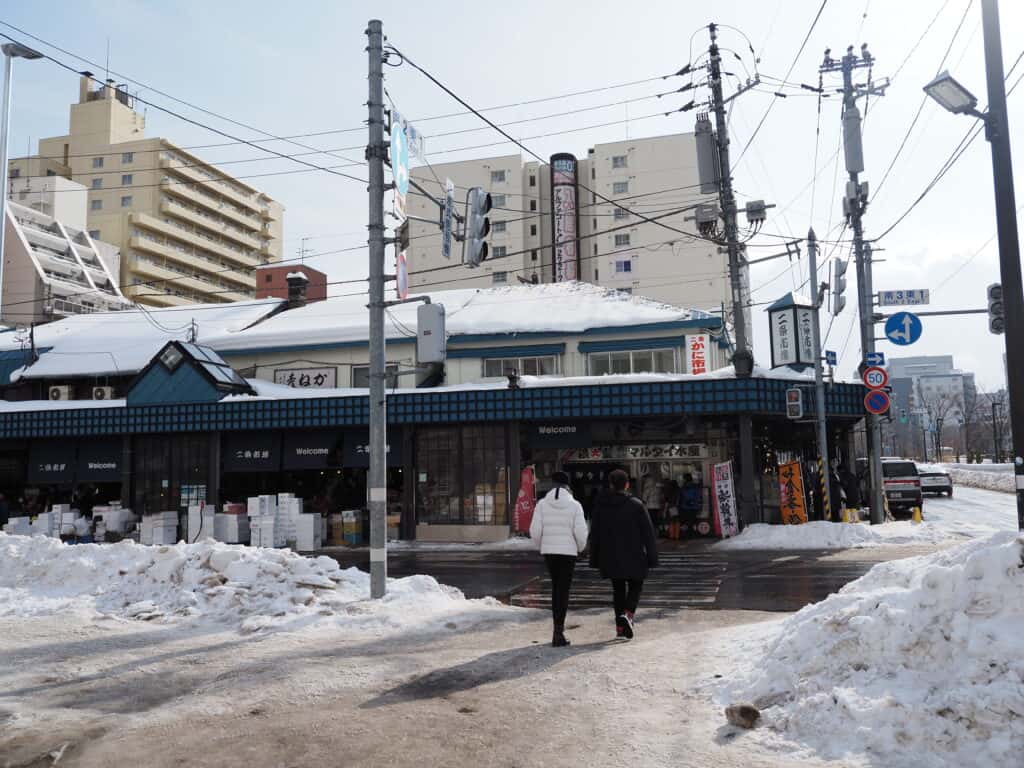
Indulge in food and drink
Hokkaido is famed among Japanese people as the nation’s food basket, producing the best fruit, vegetables, seafood and dairy produce in the country. As the capital of the region, Sapporo is the place where you can find it all. Perhaps the best place to start is Nijo Market, a covered marketplace stretching about one block, with stalls and shops selling various fresh produce. It is especially good for seafood, and there are a number of small restaurants where you can sample the freshest sushi, sashimi and other dishes – just make sure to get there early (most establishments open around 6-7am) before everything sells out!
If the winter chill makes you crave heartier fare then you are spoilt for choice too. Sapporo is synonymous with the beer of the same name, and at the Sapporo Beer Museum you can not only learn about the famous brew, but also fill yourself up on jingisukan (barbecued lamb) – one of Hokkaido’s regional specialities – in one of the museum’s massive German-style beer halls. Sapporo is also well-known for its ramen, and the centrally-located Ramen Yokocho is a narrow alley crammed with hole-in-the-wall noodle restaurants, where a bowl of piping-hot ramen and a side dish of gyoza (fried dumplings) prove to be the perfect winter-warmers at any time of day.
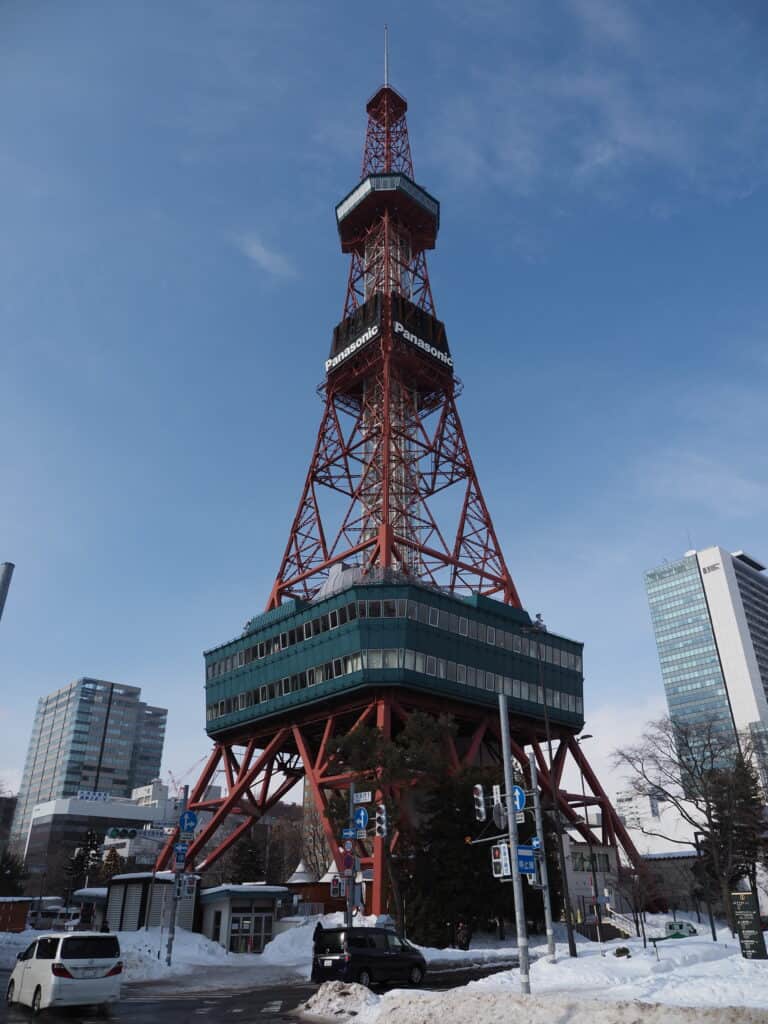
Get an aerial view
Rising up at the eastern end of central Sapporo’s Odori Park, the Sapporo TV Tower is a major landmark and one of the best places to scope out a bird’s eye view of the city from the observation deck at the top. On a clear day you can gaze over the park and way out across the city to the mountains and distant plains at its edge. At night time the tower is lit up, and the night view makes it a popular date spot.
Over on the southwestern side of the city, Mount Moiwa is a small peak with big views. A ropeway leads up to the 531m summit, from where you can see right across the city when the weather is good; it is also another popular night time viewing spot, as the ropeway runs until 10pm.
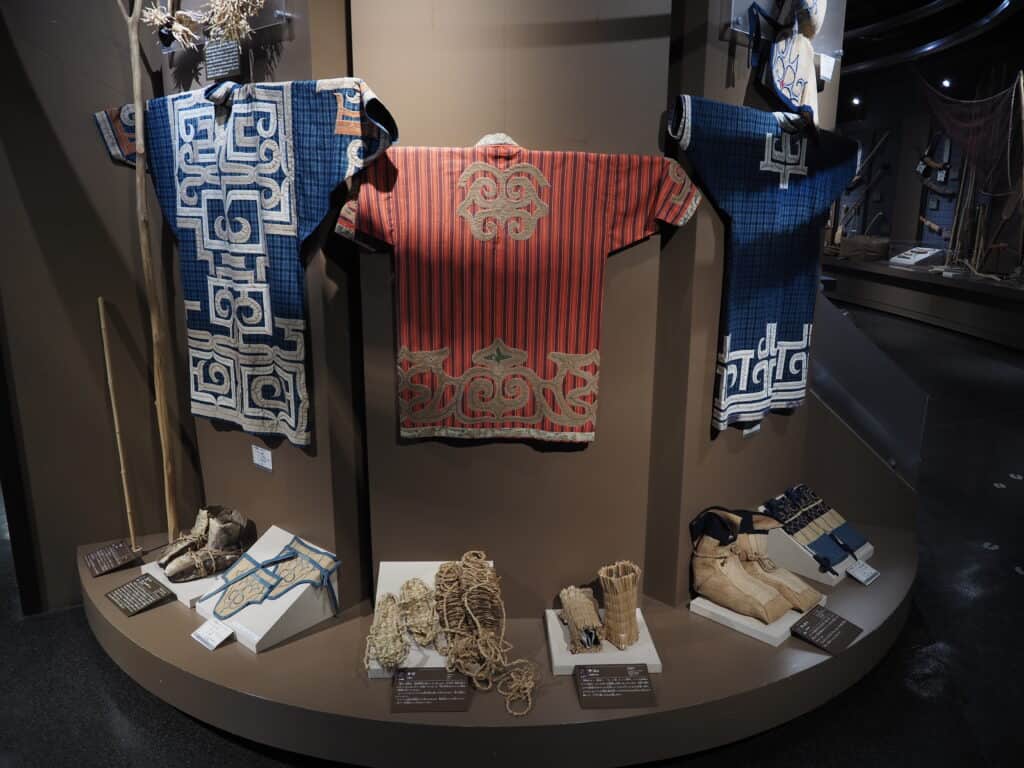
Soak in the history
Sapporo may not be particularly old (especially compared to some of Japan’s other ancient cities), but it played a vital role in the development of Hokkaido in the late 19th century. One of the city’s most famous landmarks, the Sapporo Clock Tower, was constructed in 1878, and now houses a small museum, while another landmark at the western end of Odori Park is the Old Hokkaido Government Office (nicknamed Akarenga), an attractive red-bricked Western-style building dating to 1888.
Northwest of Sapporo Station, Hokkaido University began life as the Sapporo Agricultural College, and was a key component of Hokkaido’s deep farming heritage – the university museum is one of the finest in the country and a great place to expand your knowledge of Hokkaido’s past. If you want to delve further into the history and culture of the Ainu (Hokkaido’s indigenous people), then the Sapporo Ainu Culture Promotion Centre has some excellent displays of traditional Ainu artefacts, plus recreations of traditional Ainu buildings, which are especially evocative in the snow.
Embrace the sacred
Built in the same year Sapporo was established, Hokkaido Shrine is one of the oldest and largest on the island. Located in Maruyama Park at the southwest edge of the city, the shrine is approached by walking through a massive torii gate, and the elegant structure inhabits a peaceful and enchanting forested world which feels far away from the humdrum of the city; the winter scenery only adds to the mystical atmosphere.
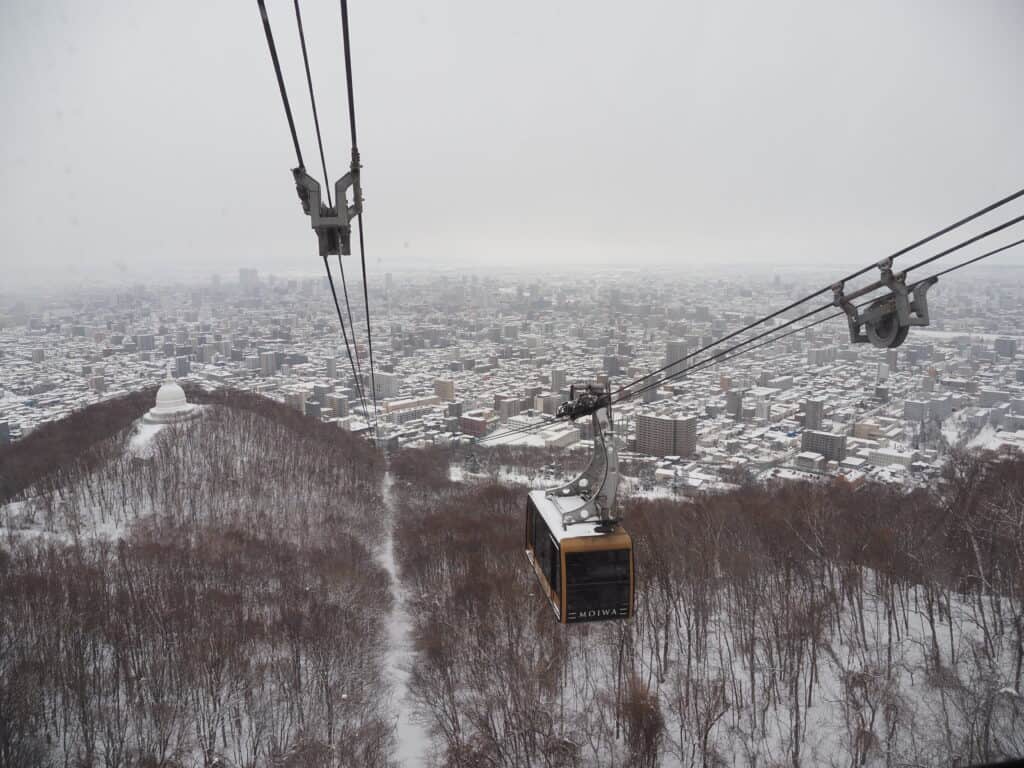
Try your hand at winter sports
If you want to burn off the calories and make the most of Hokkaido’s outstanding snow without travelling too far, then Sapporo has a number of excellent winter sports resorts right on its doorstep. The aforementioned Mount Moiwa is home to Sapporo Mt. Moiwa Ski Resort, a family-friendly resort open to skiers only, which, despite its proximity to the city, rarely gets too busy. Enjoy the sunset views from near the summit, before skiing down its choice of expert, intermediate or (slightly lower altitude) beginner runs.
If you are willing to travel a little bit further then there are other excellent resorts within easy reach of the city where you can get your winter powder fix; Sapporo Teine is a large resort with runs for all levels, exciting backcountry options and stellar views of the Sea of Japan as you glide down the mountain. A little further inland is the scenic Sapporo Kokusai Ski Resort, which has a good choice of varied mountain runs.
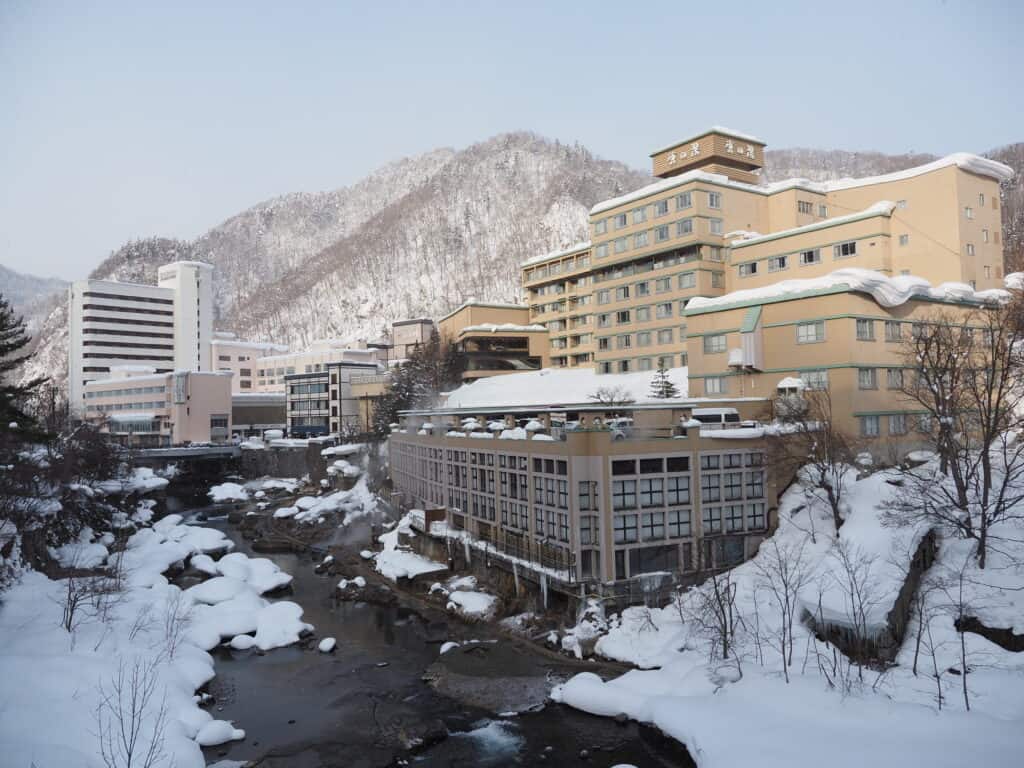
Take a dip in a hot spring
Hokkaido, like much of Japan, is blessed with countless geothermally-heated hot springs (called onsen), and the practice of taking a bath (naked, with strangers) is not only a national pastime, but has become a deeply entwined facet of Japanese culture. There are hotels, facilities and resorts built for bathing all over the country, and Jozankei Onsen (about 45mins drive southeast of Sapporo) is a scenic hot spring town tucked away in a secluded valley, and the perfect place for a relaxing onsen getaway. The tiny town has numerous fancy hot spring hotels to choose from, most with indoor and outdoor baths. There is nothing better than wallowing in invigoratingly piping-hot waters as snow lightly falls from above in the frigid winter air.
Travel to Sapporo
New Chitose Airport is situated 50km southeast of Sapporo and is the main transport hub for the island, with daily flights to and from most of Japan’s major cities – the flightpath between Tokyo and Sapporo is said to be one of the busiest in the world! Express trains run between the airport and Sapporo every 15mins and take 40mins; buses can take you directly to your central Sapporo hotel in about 1hr 20mins. If you have a JR rail pass and plenty of time on your hands, then you can reach Sapporo from Tokyo using a combination of shinkansen (bullet train) and express trains in about 8hrs 30mins.
When to visit Sapporo
Sapporo is a great destination at any time of the year, but it is in winter when it is at its most memorable. The first snow generally falls in November – with the really deep dumps from around late December – and snow remains on the ground until March. It goes without saying that temperatures are cold, averaging around -5°C to -7°C from December to February, so you better wrap up warm. Waterproof footwear with non-slip soles are best for traipsing through the snow, and be aware that roads and pavements are mostly covered in compacted ice. You can buy non-slip grips to attach to your shoes at most convenience stores.
More information
Tom Fay’s guide to Hokkaido will be published in May 2024:
